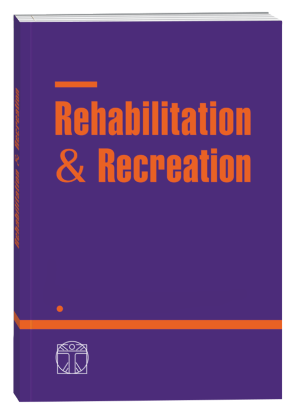CONTEMPORARY TRAINING STRATEGIES OF MIDDLE-AGED AND EARLY ADULT WOMEN IN POWERLIFTING
DOI:
https://doi.org/10.32782/2522-1795.2023.16.13Keywords:
powerlifting, women, mesocycle, macrocycle, training.Abstract
Engaging in powerlifting among middle-aged and early adult women is a pertinent subject due to its potential contributions to health, well-being, self-confidence, empowerment, and social interaction. This study aims to comprehensively analyze the factors influencing the impact of powerlifting on the physical and psychological well-being of middle-aged and early adult women. Additionally, it seeks to develop a proprietary training methodology to achieve high athletic performance and prevent injuries during powerlifting sessions. The research involved middle-aged and early adult women participating in powerlifting at the «Prometheus» sports club in Poltava, Ukraine. Data was collected on participants’ physical indicators, including strength, endurance, flexibility, and other parameters. Comparative analysis of results was conducted with a control group employing alternative training methods, and the effectiveness of the developed methodology was assessed based on the obtained results compared to the control group. Conclusions. The powerlifting training methodology, formulated on the basis of macrocycles and mesocycles, serves as an effective tool for preparing athletes for competitions and achieving optimal athletic results. Distributing training into mesocycles with varying durations and load characteristics facilitates gradual performance improvement and reaching peak physical condition. Implementation of this methodology aids in preventing overtraining and injuries, as it incorporates necessary recovery periods between training sessions. The methodology can be tailored to athletes’ needs and capabilities, offering them a rational preparation for competitions and enhancing physical fitness. Further research into this methodology can contribute to the ongoing refinement of the training process within the realm of powerlifting.
References
Horoshko, V.I., Traverse, G., & Danylchenko, S. (2023). The Effect of Physical Activity on the Secretory Function of Muscles and Bone Tissue in Humans. Journal of Medicine and Biological Sciences. No. 8(1). Pp. 50–55.
Avdonina, L., Lopuhina, A., & Mukhametova, L. (2019, August). Losing weight with the help of power gymnastic for middle aged women not engaged in labor activity. In International Scientific-Practical Conference “Business Cooperation as a Resource of Sustainable Economic Development and Investment Attraction” (ISPCBC 2019). Atlantis Press. Pp. 582–585.
Hackett, D.A., & Sabag, A. (2021). Powerlifting exercise performance and muscle mass indices and their relationship with bone mineral density. Sport Sciences for Health. No. 17. pp. 735–743.
Jesus de, J.B., Aidar, F.J., de Souza Leite Junior, J.A., Menezes, J.L., Silva, A.F., Carvutto, R., ... & Fischetti, F. (2022). Analysis of Post-Exercise Acute Hemodynamic Sustainability in Different Training Methods in Paralympic Powerlifting Athletes. Sustainability. No. 14(22). Pp. 14817.
Pinto, V.M.M., Loaiza, D.F.M., Espinal, J.A.G., & Wilcchez, O.O.R. (2020). Powerlifting: entrenamiento de fuerza, 1 RM contra ecuación Brzycki, en deportista con discapacidad física (Powerlifting: strength training, 1 RM vs Brzycki equation in an athlete with physical impairment). Retos. No. 38(38). Pp. 375–378.
Wang, B., Davies, T.B., Way, K.L., Tran, D.L., Davis, G.M., Singh, M.F., & Hackett, D.A. (2023). Effect of resistance training on local muscle endurance in middleaged and older adults: A systematic review with meta-analysis and meta-regression. Archives of Gerontology and Geriatrics. Pp. 104954.
Homma, H., Saito, M., Saito, A., Kozuma, A., Matsumoto, R., Matsumoto, S., ... & Kikuchi, N. (2022). The Association between Total Genotype Score and Athletic Performance in Weightlifters. Genes. No. 13(11). Pp. 2091.
Jeon, W., Harrison, J.M., Stanforth, P.R., & Griffin, L. (2021). Bone mineral density differences across female olympic lifters, power lifters, and soccer players. The Journal of Strength & Conditioning Research. No. 35(3). Pp. 638–643.
Angleri, V., Ugrinowitsch, C., & Libardi, C. A. (2020). Are resistance training systems necessary to avoid a stagnation and maximize the gains muscle strength and hypertrophy. Science & Sports. No. 35(2). Pp. 65-e1.
Bø, K., Anglès-Acedo, S., Batra, A., Brækken, I.H., Chan, Y.L., Jorge, C.H., ... & Dumoulin, C. (2023). Strenuous physical activity, exercise, and pelvic organ prolapse: a narrative scoping review. International Urogynecology Journal. Pp. 1–12.
Huebner, M., Riemann, B., & Hatchett, A. (2023). Grip Strength and Sports Performance in Competitive Master Weightlifters. International Journal of Environmental Research and Public Health. No. 20(3). Pp. 2033.
Miroshnikov, A.B., & Smolensky, A.V. (2020). Left ventricular geometric sportsmen power sports heavyweight with arterial hypertension. CardioSomatics. No. 11(1). Pp. 23–27.
Nieto-Acevedo, R., Romero- Moraleda, B., Díaz-Lara, F.J., Rubia, A.D.L., González-García, J., & Mon-Lopez, D. (2023). A Systematic Review and Meta-Analysis of the Differences in Mean Propulsive Velocity between Men and Women in Different Exercises. Sports. No. 11(6). Pp. 118.
Downloads
Published
How to Cite
Issue
Section
License

This work is licensed under a Creative Commons Attribution-NonCommercial-NoDerivatives 4.0 International License.











